Bmw 3.0 Csl 2016
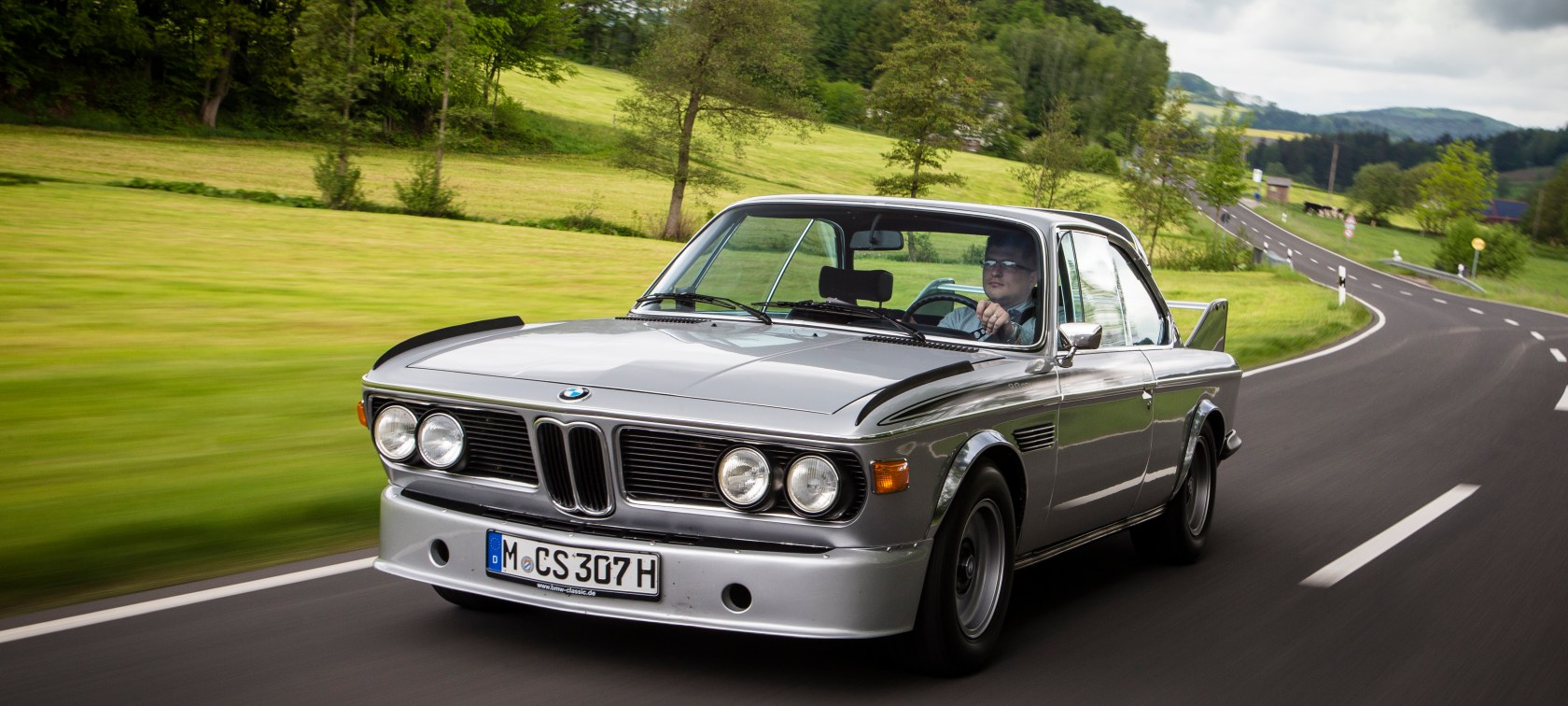
THE BMW 3.0 CSL.
Lightweight construction, motorsport and art, timelessly united.
The BMW 3.0 CSL.Lightweight construction, motorsport and art, timelessly united.
Six European championships, a sensational lap record on the Nürburgring and the first ever BMW Art Car – wherever the BMW 3.0 CSL turned up, it stood out from the crowd. Time for a journey through the history of the BMW lightweight coupé.
Read more
5 POWERFUL FACTS:
- 01 Max. output 151 kW (206 hp)
- 02 Displacement: 3.153 cm³
- 03 Vmax: 220 km/h
- 04 Curb weight: 1.270 kilograms
- 05 Production number: 167
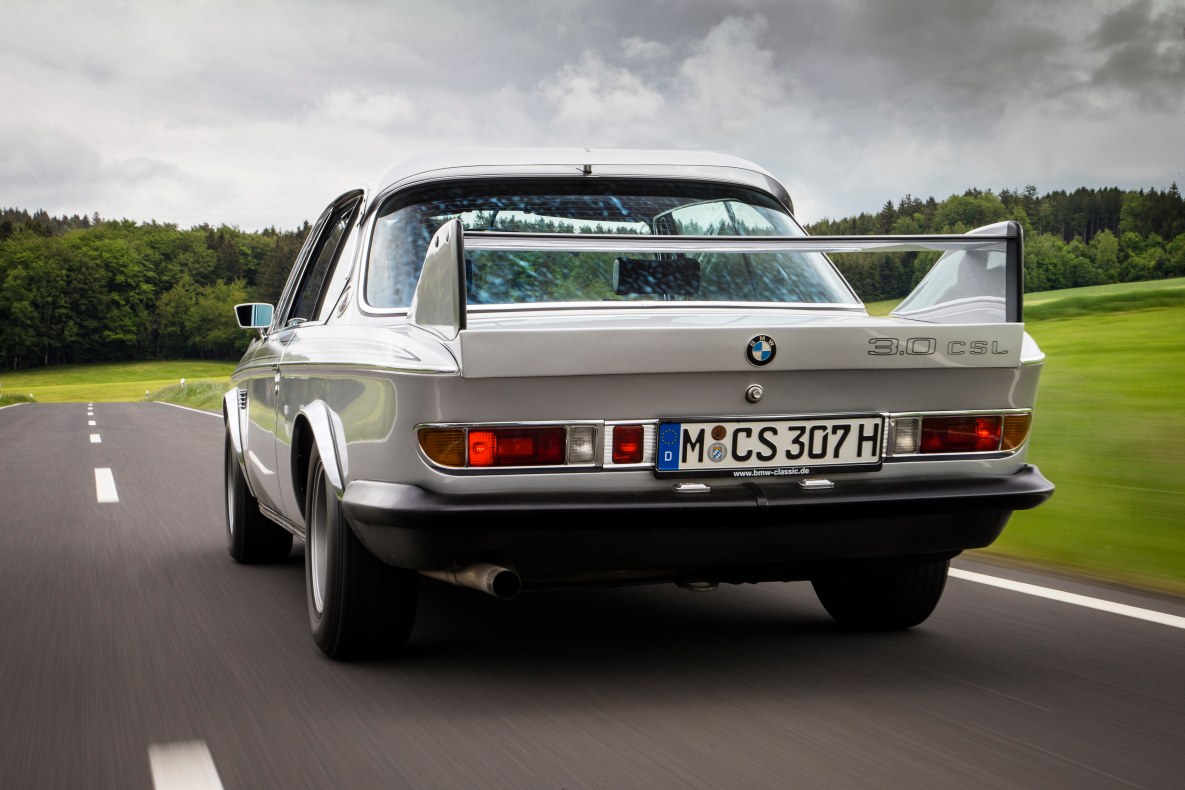
BMW 2800 CS – THE PREDECESSOR.
More sporting Gran Turismo than racing car.
BMW had already created a design icon in 1968 with the 2800 CS. Back then, the coupé with its 2.8-litre carburettor engine delivered an impressive 170 hp. The BMW 2800 CS, however, saw itself more as a sporty and comfortable Gran Turismo than an ascetic sports car. Not the best precondition as a basis for motorsport.
Already one year after the launch, Alpina deployed the first 2800 CS with boosted performance of 250 hp at the 24-four race at Spa. Alpina as well as Schnitzer optimized the suspension and power train in order to turn the sporty, comfortable coupé into a competitive touring car. But success eluded them, because the competition were driving cars up to 300 kg lighter.
Read more
FROM RACETRACK TO ROAD.
Following the weight disadvantage, Alpina developed a lightweight 3.0 CS for BMW for the road, the BMW 3.0 CSL, which at the same time served as a homologation model for motorsport. The first lightweight version of the BMW six-cylinder coupé appeared in 1971. It owns the same technology as the BMW 3.0 CS coupé's carburettor version and the same output of 180 h while weighing 215 kg less and offering much more dynamic drivability.
Read more
THE TURNING POINT IN MOTORSPORT
The turning point came with a change in the BMW board. Bob Lutz, a passionate motorsport enthusiast, took over sales in 1972. Lutz headhunted Ford's head of motorsport Jochen Neerpasch and their leading racing engineer. He also pushed ahead with the return of BMW works teams to touring car sport. The intention of uniting all BMW's motorsport engagement under one roof ultimately led to the founding of BMW Motorsport GmbH in the same year. Under Neerpasch, the second stage of the BMW 3.0 CSL was developed, now with 200 hp and six-cylinder injection engine. About a year later, the final version of the 3.0 CSL appeared, which was not only optically something very special.
Read more
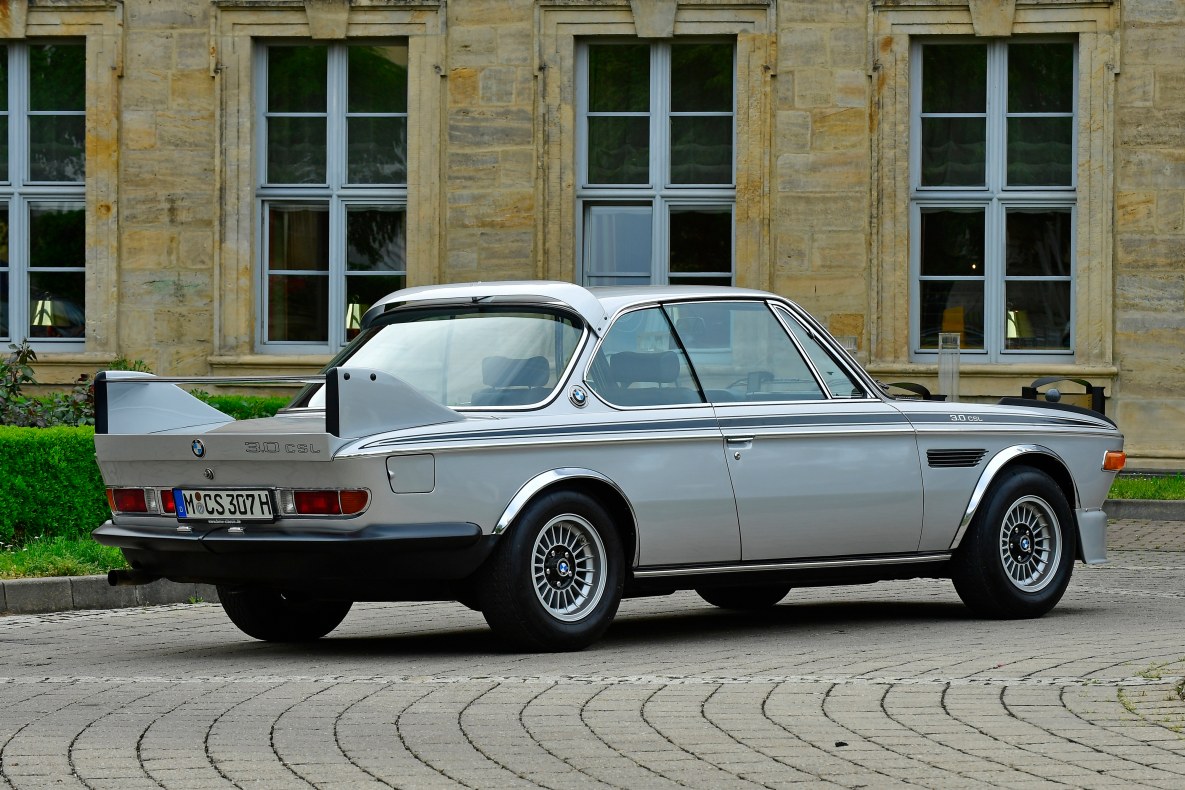
ON THE WINGS OF A BMW.
The BMW 3.0 CSL from 1973.
From 1973 onwards, the BMW 3.0 CSL was the most powerful street version of the series. The engineers achieved their ambition of a more competitive character in the third stage of development via greater capacity, output, extremely lightweight construction and a striking aero package. And they got the nickname "Batmobile" for free from BMW fans.
Read more

FORM FOLLOWS FUNCTION.
No other BMW renders the designers' favourite saying more visible than the 3.0 CSL. The air rails on the front wings ensured greater stability in fast bends. The 2cm wider wheel housings allowed room for 7" wide alloy wheels. The front spoiler put more downforce on the front axle and the massive rear spoiler gave the rear wheels more traction. The latter had to be removed for street use, as the wing wasn't street legal. When the car was delivered, the spoiler was in the boot, not mounted on the attractive rear end.
Read more
Street illegal: The rear spoiler of the 3.0 CSL was only designed for the racetrack.
Even without lettering: in 1973 every child knew the 3.0 CSL.
Not a matter of taste, but aerodynamics – the air rails.
Double headlights for good vision and prestige overtaking.
Elegant: 7 J x 14 H 2 alloy rims.
Stylish: the CSL also had the Hofmeister kink.
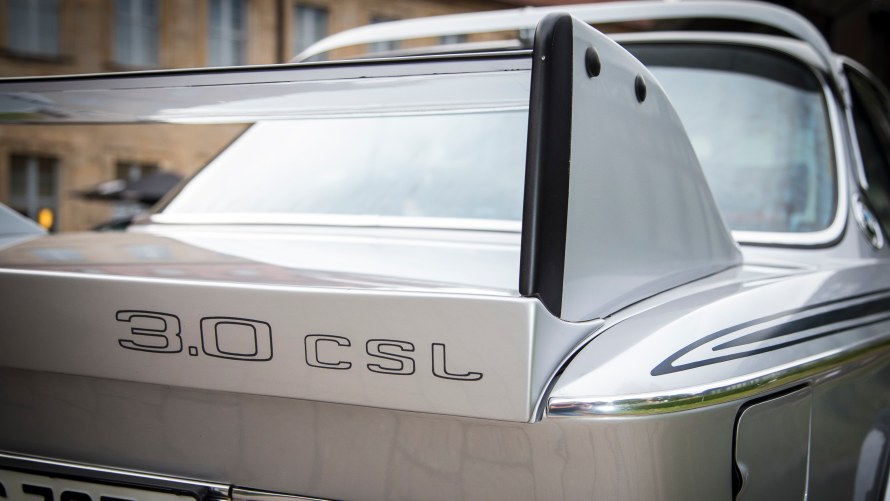
BMW 3.0 CSL
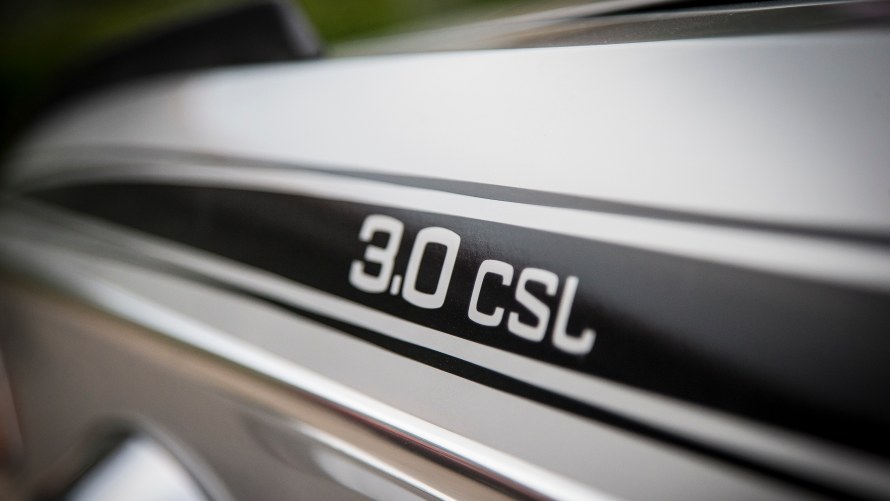
BMW 3.0 CSL
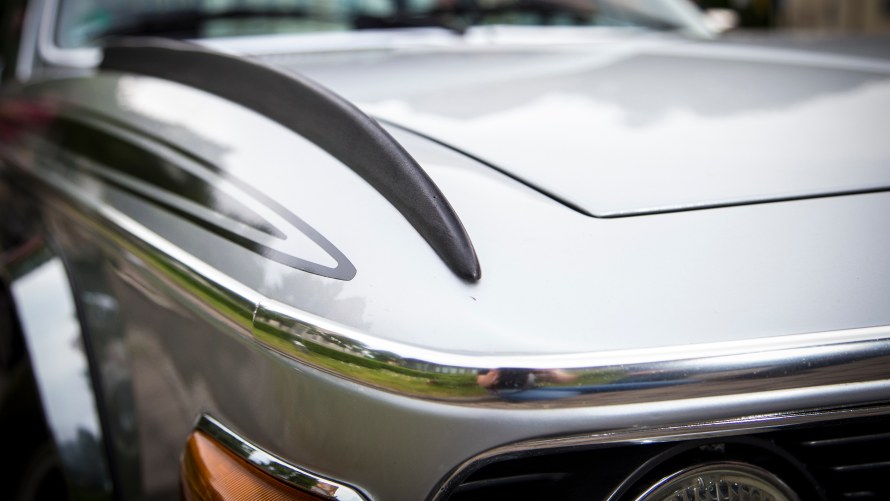
BMW 3.0 CSL
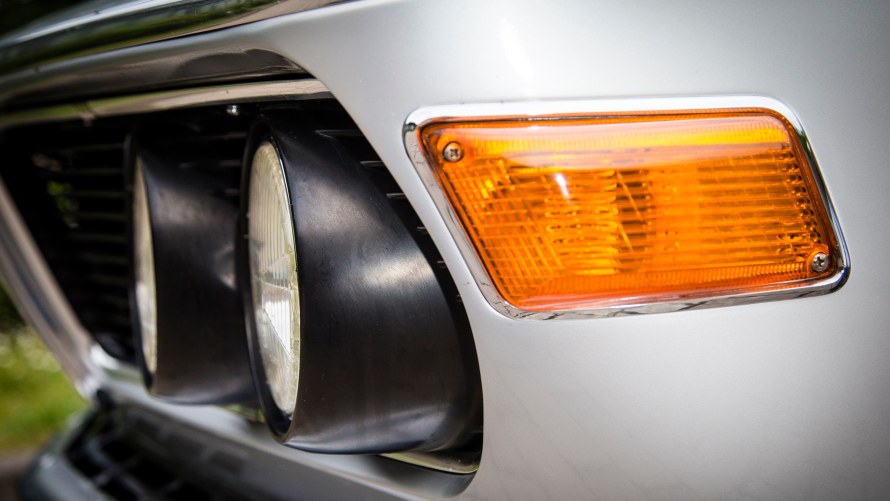
BMW 3.0 CSL
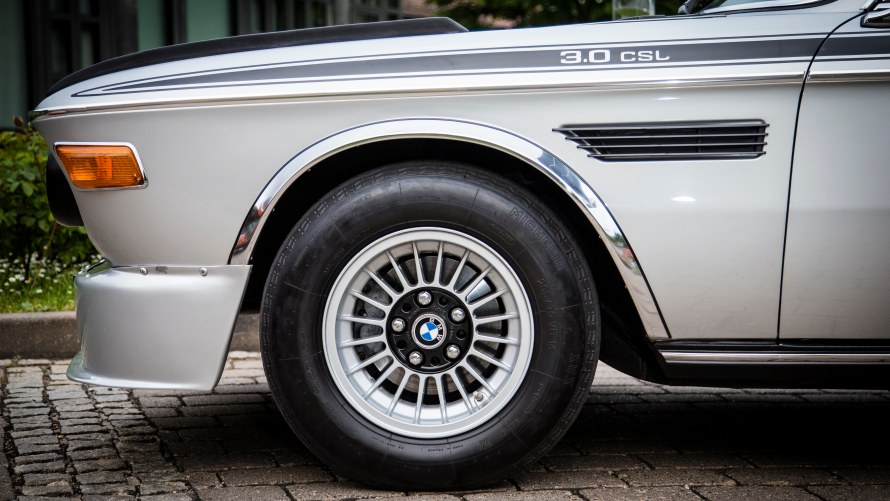
BMW 3.0 CSL
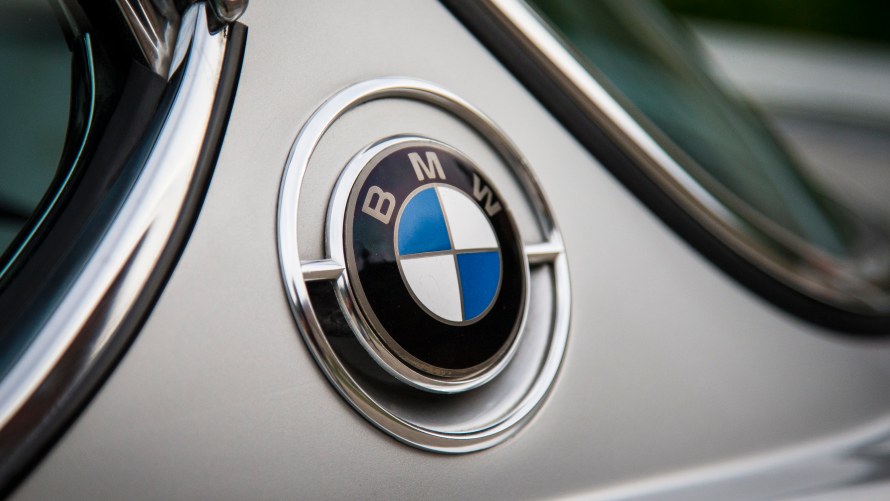
BMW 3.0 CSL
Street illegal: The rear spoiler of the 3.0 CSL was only designed for the racetrack.
Even without lettering: in 1973 every child knew the 3.0 CSL.
Not a matter of taste, but aerodynamics – the air rails.
Double headlights for good vision and prestige overtaking.
Elegant: 7 J x 14 H 2 alloy rims.
Stylish: the CSL also had the Hofmeister kink.
LIGHTWEIGHT CONSTRUCTION.
No sheet left unturned.
CSL stood for "coupé sport lightweight" – and it was the L that the developers around Jochen Neerpasch took literally. Almost every component of the BMW 3.0 CSL was weighed, measured and where possible replaced with a lighter version. Doors, boot lid and bonnet were made of aluminium, the lightest material in use 50 years ago. Even the metal was put on a diet: the roof, the dividing wall to the boot, the wheel housings along with the front and rear side walls were now made from thin sheet metal.
The rear and side windows were of perspex. Every gram counted and so even the lifting mechanism of the bonnet were replaced with thin rods. The driver sat in light bucket seats especially made for the 3.0 CSL.
Some things were left out right from the start. The front bumper, electric windows, servo steering, almost all the insulation material – and at the back there was just a light plastic skirt instead of a highly polished chrome bumper. The benefit: better dynamics thanks to a saving of around 200 kg.
Read more
6.1 kg/hp
The BMW 3.0 CSL's unladen weight of just 1.270 kg made for an excellent power to weight ratio, which put an exclamation mark on the spec sheet in the 1970s.
THE INTERIOR.
Place to be: Ideally, behind the three-spoke sports wheel.
The best things in life are four: The precise 4-speed manual transmission.
Snug fit – the sports seats in the BMW 3.0 CSL.
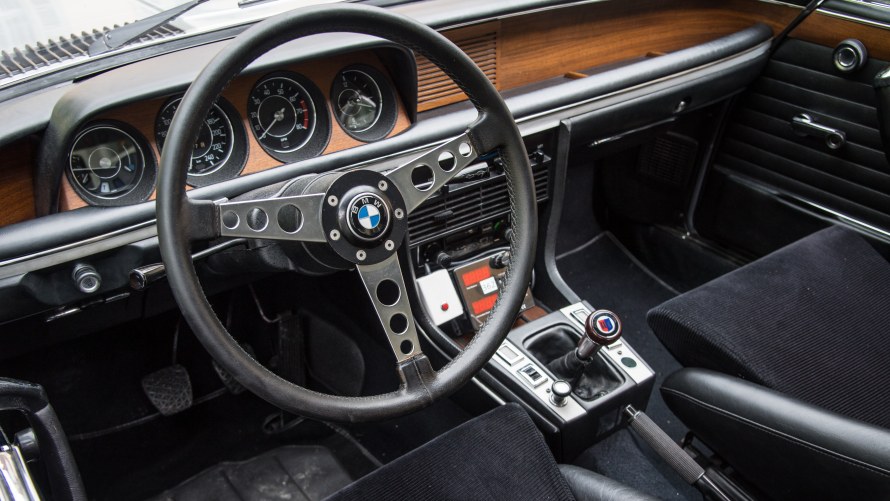
BMW 3.0 CSL
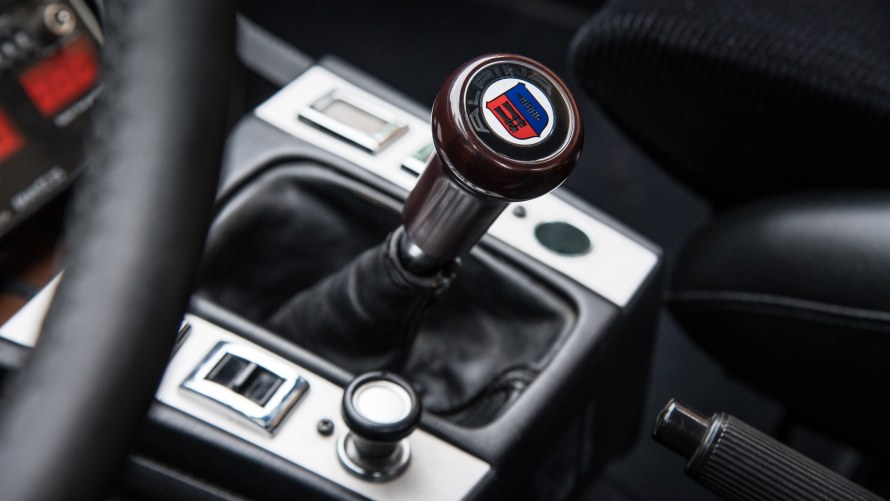
BMW 3.0 CSL
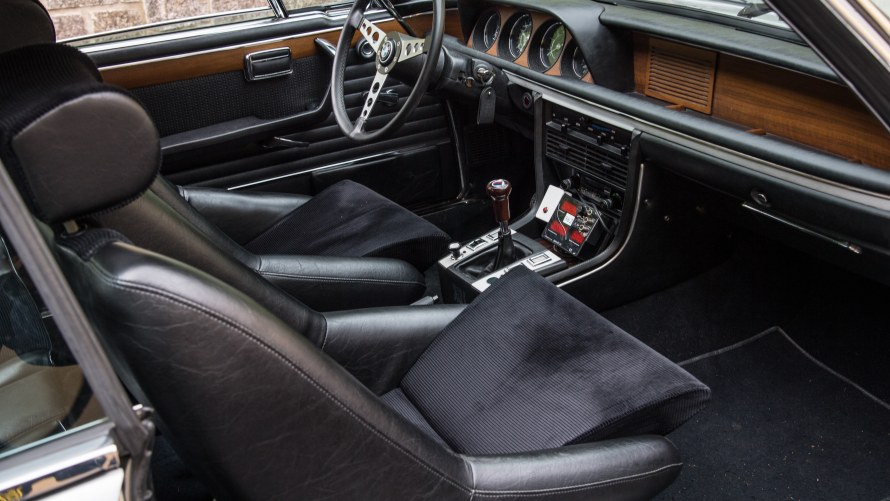
BMW 3.0 CSL
Place to be: Ideally, behind the three-spoke sports wheel.
The best things in life are four: The precise 4-speed manual transmission.
Snug fit – the sports seats in the BMW 3.0 CSL.
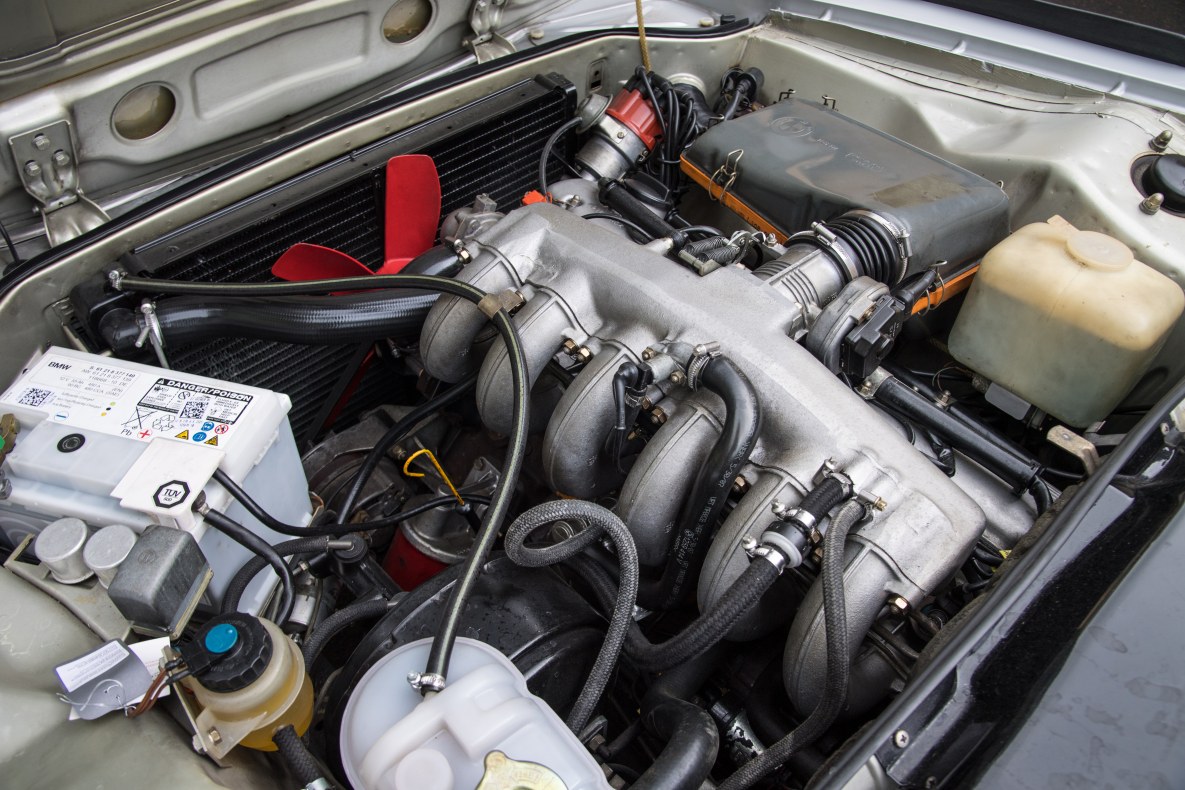
Developed for motorsport: 6-cylinder inline engine with 206 hp at 5,600 revs and 3,153 cm³ capacity.
THE ENGINE.
Excellent performance.
The lightweight version of the CS coupé had 180 hp, two carburettors and a top speed of 213 km/h. The final version managed 206 hp and had a Bosch petrol injection. All versions of the E9 series had a 6-cylinder inline engine. The capacity rose from 2,985 cm³ to 3,003 cm³, peaking in 1973 at 3,153 cm³. The Batmobile had a manual gearbox and those accelerating in fourth gear were rewarded with a top speed of 220 km/h.
Read more
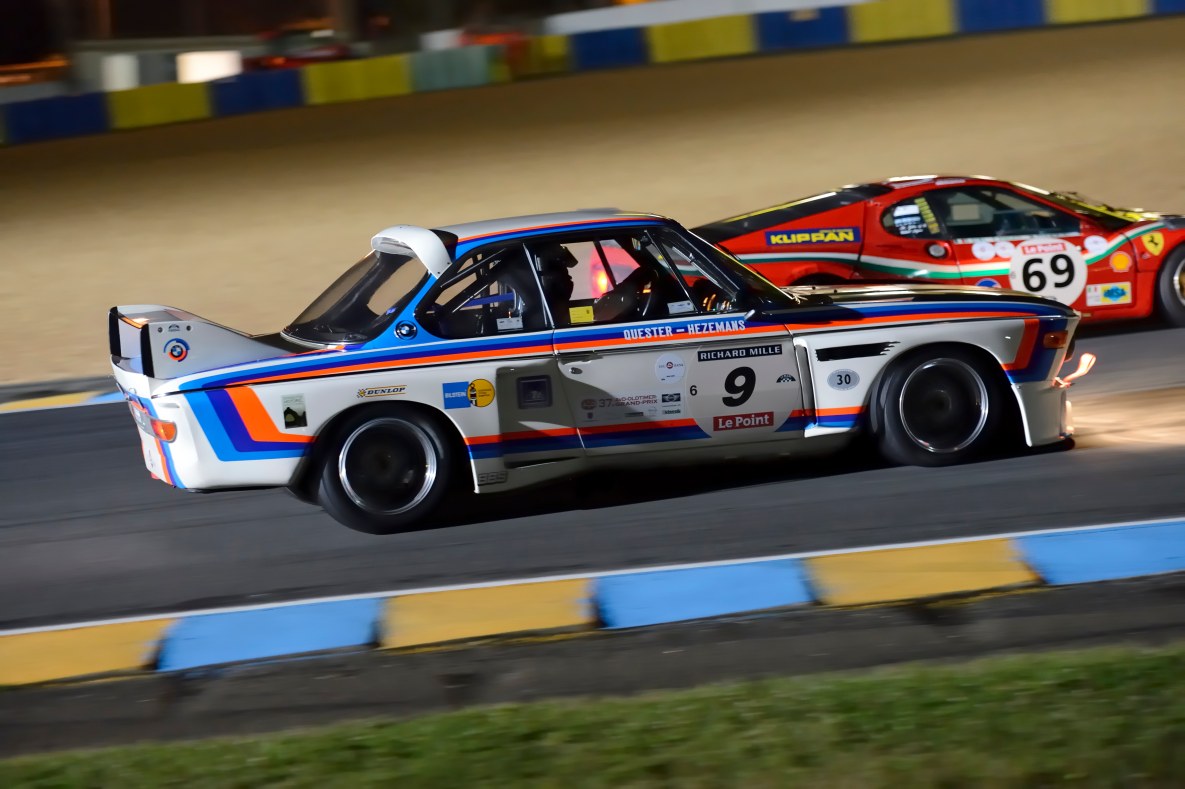
HARD TO BEAT.
May 1972 saw major new developments in the world of motorsport, with the founding of BMW Motorsport GmbH, whose goal was quite simple: quick successes. That the BMW 3.0 CSL, developed a short time later, would go on to dominate the touring car championship for years to come exceeded all expectations. As the first head of the new team of specialists, Jochen Neerpasch brought in a group of racing drivers who would have a major share in making the M the fastest letter in the world. Already in 1973 the motor racing world was dominated by the colours red and blue – above all on the chassis of the CSL Coupé, which with Hans-Joachim Stuck and Chris Amon at the wheel crossed the finishing line of the 6 Hours of the Nürburgring after 42 laps way ahead of the competition. In a second 3.0 CSL supplied by Alpina, Niki Lauda set a new lap record in the same race of 8:21.3. And this was just the beginning: Until 1979, no-one could prevent the BMW 3.0 CSL from winning six European championships.
Read more
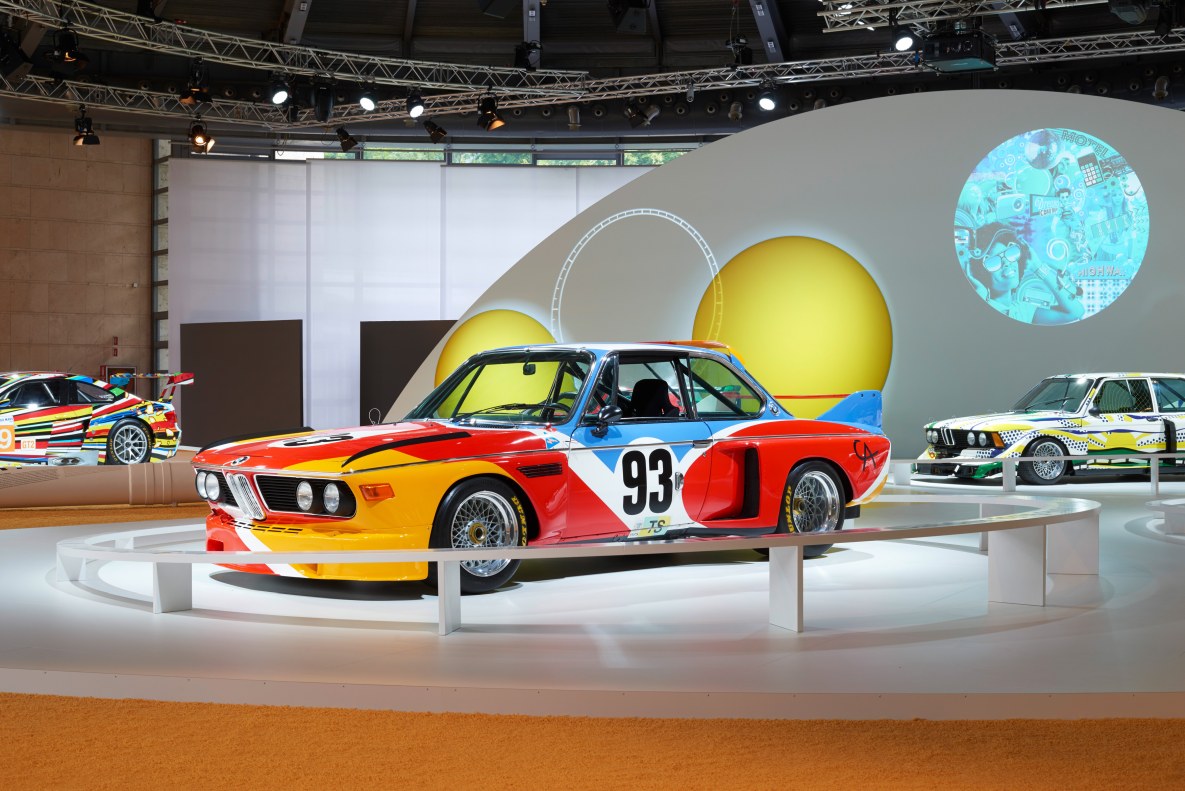
BMW Art Car by Alexander Calder
THE WORLD'S FIRST BMW ART CAR.
From the racetrack to the studio and back – the BMW 3.0 CSL set many milestones. In 1975 the sculptor Alexander Calder created an artistic landmark with the six-cylinder-coupé and laid the foundation for the BMW Art Car Collection. Having an artist create an automobile was the brainwave of French racing driver Hervé Poulain, who also later drove the artwork in competition. As in his art, Calder used strong colours and curved surfaces, which he generously distributed on wings, bonnet and roof.
Read more
Already one year later came the second eye-catching BMW 3.0 CSL Art Car. Painter Frank Stella created the fastest work of art in the world of its time. Stella's CSL had 750 hp. In his design, the artist abandoned his usual free work and allowed himself to be inspired by the racing coupé's technological aura. A black and white grid of squares was the result, which in its precision resembled oversized graph paper. Every shape of the chassis parts is grated by this graph paper, so that every curve and protrusion can be formally captured and exactly described.
Since then, some of the world's top artists have styled BMW automobiles of their time and in doing so have found very different forms of expression. The BMW Art Car Collection includes works by Roy Lichtenstein, Andy Warhol, A. R. Penck, David Hockney, Jenny Holzer, Jeff Koons, John Baldessari and Cao Fei. The BMW Art Cars reflect the cultural development of art, design and technology.
Read more
LEGENDARY AND RARE.
The iconic design, the motorsport successes and the low numbers manufactured of the final version have made the BMW 3.0 CSL a sought-after classic car with absolute rarity value. Only 167 units left the factory from 1973 to 1975. Too few to be able to spot the Batmobile on public roads nowadays, but enough to make it what it is: a special vehicle in the history of automobile construction.
Read more

MORE HIGHLIGHTS:

The BMW Z3 M Coupé.
05. Nov 2021
Already in 1997, the BMW Z3 M Coupé had the chops to become a classic car. A portrait.
Read article

The BMW M3 Touring Concept.
29. Sep 2021
This BMW M was only a feasibility study – yet still today this unique vehicle arouses emotions.
Read article

The BMW M5 Touring E61.
22. Sep 2021
Sportscar, touring limousine and cargo artist – this BMW M5 Touring had many excellent characteristics.
Read article

The BMW M5 Touring E34.
15. Sep 2021
With 340 hp, six cylinders and a superb propensity for long-distance travel.
Read article

The BMW M3 GTR Strassenversion.
31. Aug 2021
No air conditioning, no radio, no rear seats. But under the bonnet of this rare BMW M3 sits a V8 engine.
Read article

The BMW 2002 turbo.
26. Jul 2021
This BMW contradicted the spirit of the age: The BMW 2002 turbo with innovative technology and great power output is today a collector's item.
Read article
Source: https://www.bmw-m.com/en/topics/magazine-article-pool/bmw-3-0-csl.html

0 komentar:
Posting Komentar